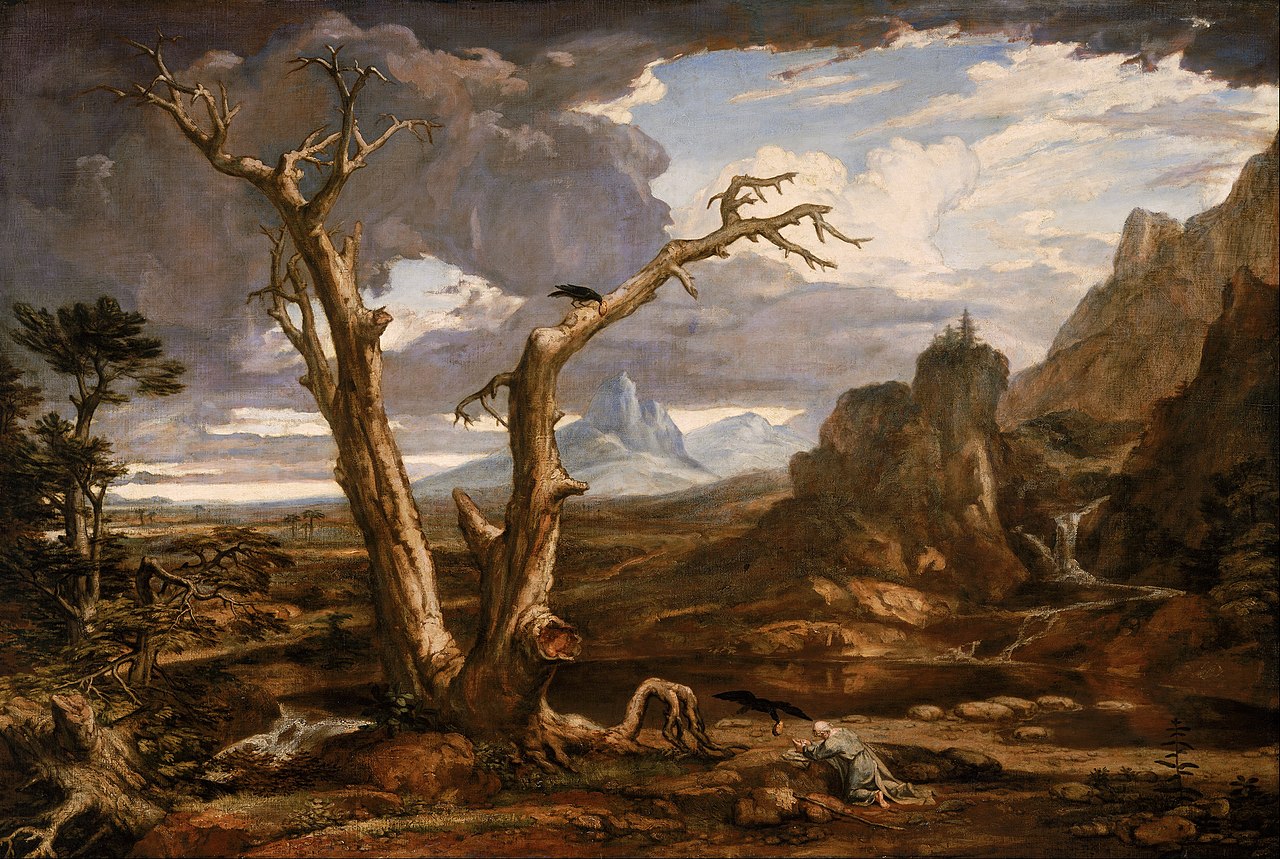Elijah in the Desert by Washington Allston, 1 Kings 19:3-18, Bible.Gallery
Artwork Description

Elijah in the Desert is an oil painting created in 1818 by Washington Allston, a pioneering figure in early American Romantic art. The large canvas, measuring over 125 by 184 centimeters, is part of the collection at the Museum of Fine Arts, Boston, and is currently on view in the Penny and Jeff Vinik Gallery. It was the very first artwork acquired by the museum, even before it had a physical building, donated in 1870 by Mrs. Samuel Hooper and her daughter, Alice Hooper.
The painting is based on a passage from the Old Testament (1 Kings 17:1–7), where the prophet Elijah is sent by God into the desert and miraculously sustained by ravens that bring him bread and meat. Allston evokes the loneliness and spiritual gravity of Elijah's experience through a bleak and expansive desert landscape rendered in muted tones of brown, steel blue, and gray. The figure of Elijah is small, almost overwhelmed by the desolate environment, emphasizing his isolation and the painting’s meditative tone.
This work reflects Allston’s deep study of European masters during his time abroad. He draws on the expressive use of color characteristic of Venetian painter Titian and the dramatic compositions of Baroque artist Salvator Rosa. The emotional intensity of the scene, combined with its subtle palette and classical influences, typifies Allston’s Romantic sensibility.
Born in South Carolina, Allston graduated from Harvard and later studied in London under Benjamin West. He traveled extensively through Europe, spending extended periods in Paris and Rome. After returning to the United States, he settled in Cambridgeport, Massachusetts.
In 1827, Allston sold the painting to Henry Labouchere (later Lord Taunton) in London. Following Labouchere’s death, the painting was purchased in 1870 by the Hooper family in Boston and donated to the Museum of Fine Arts. Alice Hooper, recognizing Allston’s importance to American art, suggested that the new museum be named in his honor, referring to him as “the one great artist of America.”
The painting remains a cornerstone of the MFA’s collection and a testament to Allston’s legacy as a foundational figure in American art history.